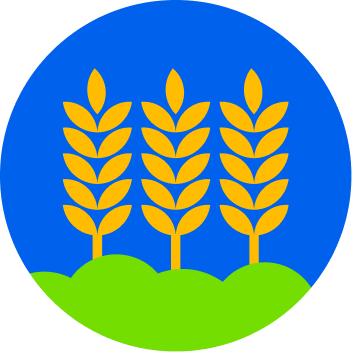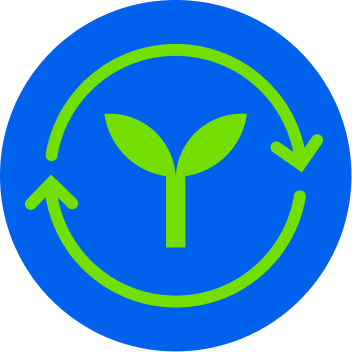Positive Agriculture
Sowing seeds: Making investments today for sustainable farms tomorrow.
ABOUT
Investing in Regenerative Agriculture for Climate Impact
Agriculture typically accounts for a large percentage of greenhouse gas and carbon emissions that a food and beverage company generates and is often the #1 opportunity for climate impact. This program is critical for PepsiCo, our customers, and suppliers if we want to play important roles in limiting climate change.
Our Positive Agriculture program makes it more accessible for our commercial partners to make direct investments to convert agricultural land to regenerative practices—and to make joint claims about the progress with PepsiCo and our suppliers.
- Lifts up farming communities by boosting economic vitality and self sufficiency
- Increases farmer’s (and therefore our businesses’) resilience to climate change
- Reduces carbon emissions
- Participating customers can share costs with us and our suppliers while getting full credit for the emission reductions throughout their supply chain. In the sustainability world, this is known as “scope 3 carbon emissions,” which is defined as the upstream and downstream emissions of the entire lifecycle of a product, not just the impact of one company’s operations
how it works
Incentivizing Sustainable Practices
Through partnerships with local experts in our operating regions, like Practical Farmers of Iowa and Soil and Water Outcomes Fund, we can incentivize farmers to adopt new, more sustainable practices that not only reduce gradual degradation of the land but actually improve it—hence the term “regenerative.” Some of those practices are included below.
Converting farmland to these practices is funded in different ways depending on the geographical territory, facilitating partner, and opportunities on the farmland itself. In some cases, the incentive is paid for by simply adopting a new practice, while in other cases the incentive is paid for by measuring and delivering specific outcomes, like greenhouse gas reductions, water reductions, etc.

Cover Cropping
A cover crop is a close-growing non-commodity crop that provides a surface cover of main crops during fallow periods. It provides seeding protection and soil protection and improvement. After termination, residues from cover crops continue to protect the soil from erosion. Some examples are legumes, grasses, turnips, and radishes.

Crop Rotation
Crop rotation is a system of growing different kinds of crops on the same land in which two or more crops are grown one after the other. This technique can break disease cycles, reduce crop protection agents used and promote soil diversity.

Conservation Tillage
Conservation tillage is a system that potentially conserves soil, water, and energy resources mainly through the reduction in the intensity of tillage, and retention of plant residues. It can include no till, low/ reduced tillage, and strip tillage.
Intended Outcomes
- Number of acres of land transitioned to regenerative agricultural practices.
- Biodiversity on affected farmland
- Water conservation
- Water quality
- Farmer resilience / improved economics
- Metric tons of CO2 equivalent (MTCO2E)— i.e., greenhouse gas emissions reduction
- Carbon emissions reductions and sequestration
Goals
Driving Progress Towards pep+
This program supports our positive agriculture goals by spreading the adoption of regenerative farming practices across 7 million acres. It drives progress against our climate goals by reducing absolute greenhouse gas (GHG) emissions across our value chain by more than 40% by 2030, to achieving net-zero emissions by 2040.
KEY INFO
Fee Structure
Funding can be based on specific projects, ranging in price from $10,000 to $1,000,000.
Timing
Generally, program development begins winter/early spring with Scope of Work finalization occurring in June. Farmer recruitment occurs late summer-early November, with data analysis and payments to farmers early the following year, typically in February.
Ideally, new partners to a program would join before farmer recruitment is in full swing. We like to put together a partnership agreement that lays out the claiming and cost sharing structure between project partners before recruitment.
Prerequisites
None! The farming activity is concentrated heavily in the Midwest, but any customer who wants to help improve row-crop farming in the U.S. is invited to play a role. See sign up instructions below.
FAQs
What type of customer can participate in the Positive program?
PepsiCo customers that fall on the most highly engaged end of the sustainability spectrum will likely be the most interested, but any customer who wants to reduce their scope 3 carbon impact or improve the health of our planet through regenerative agricultural programs can participate.
Ideally our partners in these programs will get involved with the effort (rather than just paying for something to claim). This could mean visiting, learning and joining in the design of a program each year.
What should the customer know before participating?
Customers should consider cost and timing considerations above.
How to sign up?
Those who wish to participate should connect with Margaret.Henry@pepsico.com to discuss specific opportunities and options.
IN THE NEWS
